Text
(Accepted) Sheridan Animation Portfolio 2017























2nd time applying D: aaaaaand I got in! :D

Sorry for the low-quality pics (._.‘’) (for those of you who tries to zoom in on a phone)
29 notes
·
View notes
Photo
Important important stuff



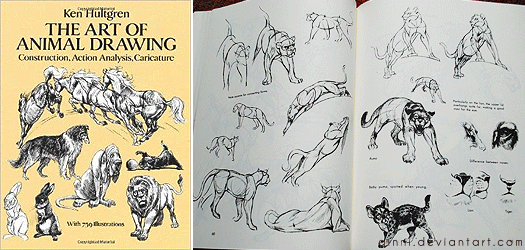
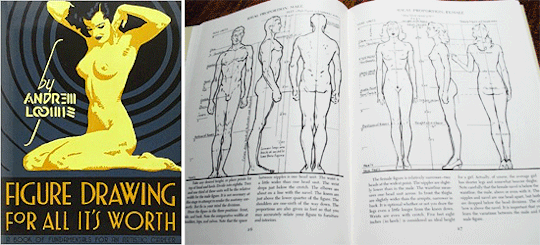

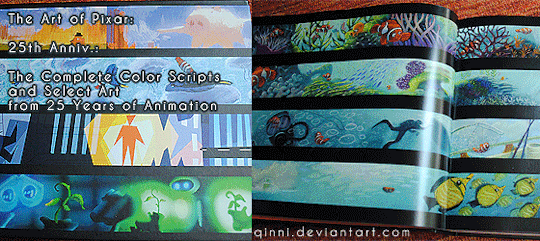
Here’s the list with complete photos and reviews
Anatomy Books
An Atlas of Anatomy for Artists | on Amazon.ca
The Art of Animal Drawing | on Amazon.ca
Anatomy for the Artist | on Amazon.ca
Figure Drawing for All It’s Worth | on Amazon.ca
Animation/ Illustration/ Concept art Skill-set Books
Color and Light: A Guide for the Realist Painter | on Amazon.ca
The Skillful Huntsman | on Amazon.ca
Dream Worlds: Production Design for Animation | on Amazon.ca
The Animator’s Survival Kit | on Amazon.ca
Perspective Made Easy | Amazon.ca
How to Draw: drawing and sketching objects and environments from your imagination | on Amazon.ca
Inspiring Illustration Books
The Art of Pixar: The Complete Color Scritps and Select Art from 25 Years of Animation | on Amazon.ca
Art of Tangled (honestly any of the art-of books are awesome) | on Amazon.ca
James Jean’s Fable Covers | on Amazon.ca
Spectrum Collection | Amazon.ca
Bouguereau (on Amazon.ca) and John Sargent (on Amazon.ca)
20K notes
·
View notes
Text
Naoki Urasawa’s Manben

If you haven’t watched Naoki Urasawa’s Manben Go watch it now!..well if you are into manga or comics and want to see the process, tools and lives of famous Japanese manga creators in a documentary style program exploring all that then you’ll surely like Manben!
The series is hosted by Naoki Urasawa who is the mastermind behind a body of work that includes masterpieces like : 20th Century Boys, Monster, Pluto, Billy Bat and more. I’m a huge fan if you haven’t noticed, however, it’s not just about him..it’s got so many different flavors and inputs and I really enjoyed it and learnt (learning still) a lot from it.
I recommend that you looks it up and watch it if you like what you read.. and I’ll put links to what I found on the interwebs .so if it doesn’t work or if it violates any rights please let me know and I’ll fix it/remove it. (it’s still ongoing so there will be more in the future..like this month of September!..and I don’t want it to stop! :D) But first..some pictures:












Second comes the English dubbed episodes that I found that I’m not sure about sharing them..let me know if there is other sources that should be here instead or where to buy them..etc Urasawa Naoki Manben S0E0 - Kawaguchi Kaiji & Yamashita Kazumi
Urasawa Naoki S1E1 2015 - Higashimura Akiko
Urasawa Naoki S1E2 2015 - Fujita Kazuhiro
Urasawa Naoki S1E4 2015 - Saito Takao
Urasawa Naoki S2E1 2016 - Hagio Moto
Urasawa Naoki S2E2 2016 - Hanazawa Kengo
Urasawa Naoki S2E3 2016 - Igarashi Daisuke
..I believe season 3 is on through September still..Enjoy!
28K notes
·
View notes
Photo
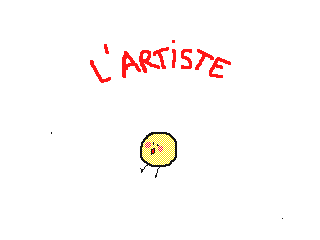
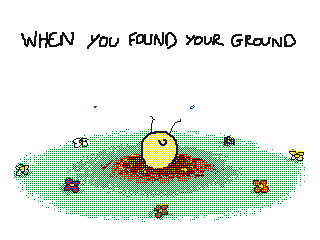
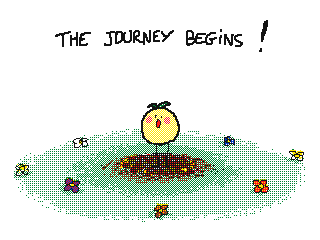

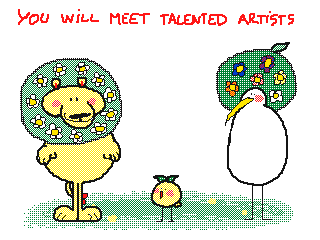

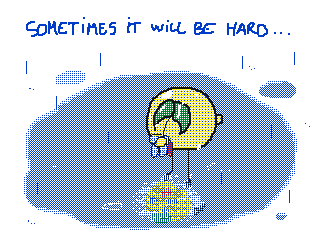
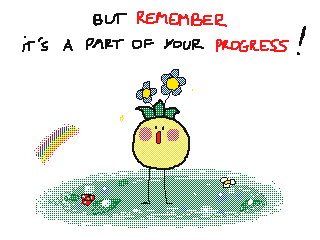

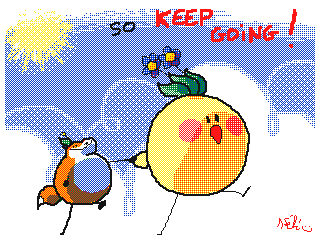
My vision of an artist :)
For me, we are all a part of an amazing garden, each of us making a part of it And we are all a little seed falling on the ground of being an artist.
The flowers represent our passion and like in a garden, many types exists !
When we know what we love the adventure begins, we meet amazing artists that will inspire us to grow up !
Flowers need the rain to grow up, so your passion will need some difficulties to grow as well. Après la pluie vient le beau temps- After the rain comes the sun !
And then at your turn you will inspire the young and new flowers to grow as well !
For the talented artists I used the colors of the flowers to show the directions they chose, many went to lots of them while some artists prefer to only chose one (like the lion and the white flowers) since, the flower on the tail is red, that means that choosing one direction can lead you to another one in the futur, who know ? You don’t see it yet :)
I hope this little reminder will help you keeping going !! Always keep it up and KEEP GOING !!
Bonne chance :) that means Good luck in French ^^
98K notes
·
View notes
Text
For those asking how I pick my colors!
Well, for the most basic of basics,

There’s a lot more than these, obviously, and you can look ‘em up pretty easily.
So off of the 2 colors I chose as an example for Complimentary, (red-orange and cyan, refer to the images above), I’ll make a 7-color palette

Here is what it looks like when I use the above color palettes,

notice how the one on the left, where I moved along the color wheel while choosing the colors, looks more vibrant than the one on the right, where i stayed stationary on the color wheel.
Basically,

——————————————-
Additionally,

——————————————-
And that’s how I choose my color palettes. Hope this makes sense to all of y’all.
Also even I tend to stray from the above. I always make sure to balance any cool color with a pinch of something on the warm spectrum and vice versa, just to put balance in the color palette.
6K notes
·
View notes
Text
Reblog if you’re Team Valor
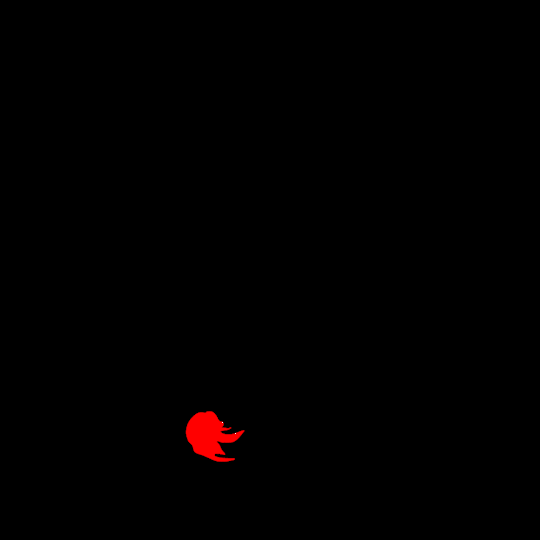
Reblog here for Team Mystic
Reblog here for Team Instinct
Credit
88K notes
·
View notes
Video
tumblr
THIS WILL ALWAYS BE MY FAVORITE VIDEO ON THIS WEBSITE
978K notes
·
View notes
Photo









This is just a quick little guide focused on layers and etc. that I made for a friend who recently got Manga Studio 5 ! But I figured I’d upload it here also for simplicity and in case anyone else has use of it !
2K notes
·
View notes
Text
why you should make a webcomic and why you can make a webcomic
why should you make a webcomic?
it’s regular drawing practice
you get to draw and develop the universe your OCs live in
you could draw your OCs making out with context
see number 3
how can you make a webcomic?
make a new tumblr
install this theme https://www.tumblr.com/theme/37061
post comics as you would on any other tumblr they show up on their own webcomic site
what if nobody sees my webcomic :(
too bad you got to draw your OCs making out and nobody can appreciate your artistic genius obviously the world is not ready for this webcomic genius
197K notes
·
View notes
Text
Your Character’s Personality
Personality is the most important thing about your character.
So, whenever I see character sheets, most people just put a little paragraph for that section. If you’re struggling and don’t know what your character should say or do, what decisions they should make, I guarantee you that this is the problem.
You know your character’s name, age, race, sexuality, height, weight, eye color, hair color, their parents’ and siblings’ names. But these are not the things that truly matter about them.
Traits:
pick traits that don’t necessarily go together. For example, someone who is controlling, aggressive and vain can also be generous, sensitive and soft-spoken. Characters need to have at least one flaw that really impacts how they interact with others. Positive traits can work as flaws, too. It is advised that you pick at least ten traits
people are complex, full of contradictions, and please forgive me if this makes anyone uncomfortable, but even bullies can be “nice” people. Anyone can be a “bad” person, even someone who is polite, kind, helpful or timid can also be narcissistic, annoying, inconsiderate and a liar. People are not just “evil” or “good”
Beliefs:
ideas or thoughts that your character has or thinks about the world, society, others or themselves, even without proof or evidence, or which may or may not be true. Beliefs can contradict their values, motives, self-image, etc. For example, the belief that they are an awesome and responsible person when their traits are lazy, irresponsible and shallow. Their self-image and any beliefs they have about themselves may or may not be similar/the same. They might have a poor self-image, but still believe they’re better than everybody else
Values:
what your character thinks is important. Usually influenced by beliefs, their self-image, their history, etc. Some values may contradict their beliefs, wants, traits, or even other values. For example, your character may value being respect, but one of their traits is disrespectful. It is advised you list at least two values, and know which one they value more. For example, your character values justice and family. Their sister tells them she just stole $200 from her teacher’s wallet. Do they tell on her, or do they let her keep the money: justice, or family? Either way, your character probably has some negative feelings, guilt, anger, etc., over betraying their other value
Motives:
what your character wants. It can be abstract or something tangible. For example, wanting to be adored or wanting that job to pay for their father’s medication. Motives can contradict their beliefs, traits, values, behavior, or even other motives. For example, your character may want to be a good person, but their traits are selfish, manipulative, and narcissistic. Motives can be long term or short term. Everyone has wants, whether they realize it or not. You can write “they don’t know what they want,” but you should know. It is advised that you list at least one abstract want
Recurring Feelings:
feelings that they have throughout most of their life. If you put them down as a trait, it is likely they are also recurring feelings. For example, depressed, lonely, happy, etc.
Self Image:
what the character thinks of themselves: their self-esteem. Some character are proud of themselves, others are ashamed of themselves, etc. They may think they are not good enough, or think they are the smartest person in the world. Their self-image can contradict their beliefs, traits, values, behavior, motives, etc. For example, if their self-image is poor, they can still be a cheerful or optimistic person. If they have a positive self-image, they can still be a depressed or negative person. How they picture themselves may or may not be true: maybe they think they’re a horrible person, when they are, in fact, very considerate, helpful, kind, generous, patient, etc. They still have flaws, but flaws don’t necessarily make you a terrible person
Behavior:
how the character’s traits, values, beliefs, self-image, etc., are outwardly displayed: how they act. For example, two characters may have the trait “angry” but they all probably express it differently. One character may be quiet and want to be left alone when they are angry, the other could become verbally aggressive. If your character is a liar, do they pause before lying, or do they suddenly speak very carefully when they normally don’t? Someone who is inconsiderate may have issues with boundaries or eat the last piece of pizza in the fridge when they knew it wasn’t theirs. Behavior is extremely important and it is advised you think long and hard about your character’s actions and what exactly it shows about them
Demeanor:
their general mood and disposition. Maybe they’re usually quiet, cheerful, moody, or irritable, etc.
Posture:
a secondary part of your character’s personality: not as important as everything else. It is advised you fill this out after. Posture is how the character carries themselves. For example, perhaps they swing their arms and keep their shoulders back while they walk, which seems to be the posture of a confident person, so when they sit, their legs are probably open. Another character may slump and have their arms folded when they’re sitting, and when they’re walking, perhaps they drag their feet and look at the ground
Speech Pattern:
a secondary part of your character’s personality: not as important as everything else. It is advised you fill this out after. Speech patterns can be words that your character uses frequently, if they speak clearly, what sort of grammar they use, if they have a wide vocabulary, a small vocabulary, if it’s sophisticated, crude, stammering, repeating themselves, etc. I personally don’t have a very wide vocabulary, if you could tell
Hobbies:
a secondary part of your character’s personality: not as important as everything else. It is advised you fill this out after. Hobbies can include things like drawing, writing, playing an instrument, collecting rocks, collecting tea cups, etc.
Quirks:
a secondary part of your character’s personality, not as important as everything else. It is advised you fill this out after. Quirks are behaviors that are unique to your character. For example, I personally always put my socks on inside out and check the ceiling for spiders a few times a day
Likes:
a secondary part of your character’s personality, not as important as everything else. It is advised you fill this out after. Likes and dislikes are usually connected to the rest of their personality, but not necessarily. For example, if your character likes to do other people’s homework, maybe it’s because they want to be appreciated
Dislikes:
a secondary part of your character’s personality, not as important as everything else. It is advised you fill this out after. Likes and dislikes can also contradict the rest of their personality. For example, maybe one of your character’s traits is dishonest, but they dislike liars
History:
your character’s past that has key events that influence and shape their beliefs, values, behavior, wants, self-image, etc. Events written down should imply or explain why they are the way they are. For example, if your character is distrustful, maybe they were lied to a lot by their parents when they were a child. Maybe they were in a relationship for twenty years and found out their partner was cheating on them the whole time. If their motive/want is to have positive attention, maybe their parents just didn’t praise them enough and focused too much on the negative
On Mental and Physical Disabilities or Illnesses
if your character experienced a trauma, it needs to have an affect on your character. Maybe they became more angry or impatient or critical of others. Maybe their beliefs on people changed to become “even bullies can be ‘nice’ people: anyone can be a ‘bad’ person”
people are not their illness or disability: it should not be their defining trait. I have health anxiety, but I’m still idealistic, lazy, considerate, impatient and occasionally spiteful; I still want to become an author; I still believe that people are generally good; I still value doing what make me feel comfortable; I still have a positive self-image; I’m still a person. You should fill out your character’s personality at least half-way before you even touch on the possibility of your character having a disability or illness
Generally everything about your character should connect, but hey, even twins that grew up in the same exact household have different personalities; they value different things, have different beliefs. Maybe one of them watched a movie that had a huge impact on them.
Not everything needs to be explained. Someone can be picky or fussy ever since they were little for no reason at all. Someone can be a negative person even if they grew up in a happy home.
I believe this is a thought out layout for making well-rounded OCs, antagonists and protagonists, whether they’re being created for a roleplay or for a book. This layout is also helpful for studying Canon Characters if you’re looking to accurately roleplay as them or write them in fanfiction or whatever.
I’m really excited to post this, so hopefully I didn’t miss anything important…
If you have any questions, feel free to send a message.
- Chick
102K notes
·
View notes

